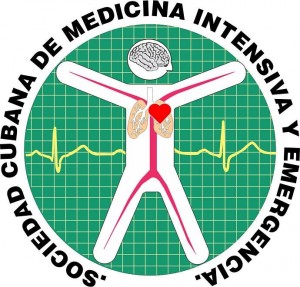Enfermedad neumocócica invasiva en un servicio de terapia intensiva pediátrica / Invasive pneumococcal disease at a pediatric critical care unit
Palabras clave:
neumococo, serotipos, complicaciones, niñosResumen
Introducción: las infecciones causadas por Streptococcus pneumoniae (neumococo) son una de las mayores causas de morbimortalidad en todo el mundo por una enfermedad infecciosa potencialmente evitable por vacunación.Objetivo: caracterizar a los pacientes con enfermedad neumocócica invasiva ingresados en el servicio de terapia intensiva del Hospital Pediátrico Juan Manuel Márquez durante el período de enero de 2010 hasta diciembre de 2015.
Diseño metodológico: se realizó un estudio observacional, descriptivo, retrospectivo. Con un universo constituido por 47 pacientes menores de 18 años ingresados en el servicio de terapia del Hospital Pediátrico Juan Manuel Márquez con diagnóstico de enfermedad neumocócica invasiva. La muestra fue de 44 niños. Para la recolección de la información, se trabajó con las historias clínicas de los pacientes. Los datos primarios se procesaron en el programa estadístico SPSS 22.0. Se utilizó estadística descriptiva.
Resultados: de los 44 pacientes, 26 eran masculinos y 18 femeninos para un 59,1 % y 40,9 % respectivamente.
Conclusiones: los serotipos 14 y 19 A fueron los más frecuentes. Aislándose el serotipo 14 en todas las formas clínicas. El derrame pleural fue la complicación más frecuente, seguida del shock séptico.
Descargas
Citas
1. Centers for Disease Control and Prevention. Pneumococcal Disease: En línea: Epidemiology and Prevention of Vaccine-Preventable Diseases. 12th ed. Washington DC: Public Health Foundation, 2012. p. 233–48 en: http://www.cdc.gov/vaccines/pubs/pinkbook/downloads/pneumo.pdf (consulta 4 oct 2015).
2. Angoulvant F, Levy C, Grimpel E, Varon E, Lorrot M, Biscardi S, et al. Early impact of 13-valent pneumococcal conjugate vaccine on community acquired pneumonia in children. Clin Infect Dis. 2014;58:918-24.
3. Mehr S, Wood N. Streptococcus pneumoniae, a review of carriage, infection, serotype replacement and vaccination. Paediatr Respir. 2012;13:258-64.
4. Ampofo K, Pavia AT, Stockmann CR, Blaschke AJ, Weng HY, Korgenski KE, et al. Evolution of the epidemiology of pneumococcal disease among Utah children through the vaccine era. Pediatr infec Dis J. 2011 Dec;30(12):1100-3.
5. Arredondo GJ, Castañón GJ, Domínguez SL, García PE, Granados AJ, Guinto BG, et al. Enfermedades neumocócicas en niños. Presentación clínica y tratamiento Boletín de información clínica y terapéutica Academia Nacional de Medicina. 2012;18(2):1-5.
6. Calix JJ, Porambo RJ, Brady AM, Larson TR, Yother J, Abeygunwardana C, et al. Biochemical, genetic, and serological characterization of two capsule subtypes among Streptococcus pneumoniae Serotype 20 strains: discovery of a new pneumococcal serotype. J Biol Chem. 2012 Aug 10;287(33):27885- 94.
7. Tin Tin M, Christopoulo D, Schmitt HJ. Pneumococcal serotype evolution in Western Europe. BCM Infect Dis. 2015;15:419.
8. Dagan R, Frasch C. Clinical characteristics of a novel 10-valent pneumococcal non typeable Haemophilus influenzae protein D conjugate vaccine candidate (PHiD-CV). Introduction. Pediatr. Infect. Dis. J. 2012;28(4 Suppl):S63–65.
9. Simell B, Auranen K, Kayhty H, Goldblatt D, Dagan R, O´Brien KL. The fundamental link between pneumococcal carriage and disease. Expert Rev Vaccines. 2012;11:841-55.
10. World Health Organization. Pneumococcal conjugate vaccine for childhood immunization--WHO position paper. Wkly. Epidemiol. Rec. 2012;82(12):93–104.
11. Tunkel AR, Scheld WM. Meningitis aguda. En Enfermedades infecciosas. Principios y práctica. Mandell, Douglas y Bennett. Elsevier España SA, 6 ed. Madrid, 2013;8(3):89 - 96.
12. World Health Organization. Pneumococcal conjugate vaccine for childhood immunization. WHO position paper. Weekly Epidemiological Record. 2007;82:93-104.
13. Pelton SI, Weycker D, Farkouh RA, Strutton DR, Shea KM, Edelsberg J. Risk of pneumococcal disease in children with chronic medical conditions in the era of pneumococcal conjugate vaccine. Clin Infect Dis. 2014;59:615-23.
14. Yildirim I, Shea KM, Pelton SI. Pneumococcal disease in the era of pneumococcal conjugate vaccine. Clin Infect Dis N Am. 2015;29:679-97.
15. Andrews NJ, Waight PA, George RC, Slack MP, Miller E. Impact and effectiveness of 23-valent pneumococcal polysaccharide vaccine against invasive pneumococcal disease in the elderly in England and Wales. Vaccine. 2012;30:6802-8.
16. Greenberg D, Givon-Lavi N, Ben Shimol S, Bar Ziv J. Impact of PCV7/PCV13 introduction on community-acquired alveolar pneumonia in children < 5 years. Vaccine. 2015;33:4623-9.
17. Knol MJ, Wagenvoort GHJ, Sanders EAM, Elberse K, Vlamickx BJ, Melker HE, et al. Invasive pneumococcal disease 3 years after introduction of 10-valent pneumococcal conjugate vaccine. Emerg Infect Dis. 2015;21:2040-4.
18. Knol MJ, Wagenvoort GHJ, Sanders EAM, Elberse K, Vlamickx BJ, Melker HE, et al. Invasive pneumococcal disease 3 years after introduction of 10-valent pneumococcal conjugate vaccine. Emerg Infect Dis. 2015;21:2040-4.
19. Bradley J, Byington C, Shah S, Alverson B. The management of community-acquired pneumonia in infants and children older than 3 months of age: Clinical Practice Guidelines by the Pediatric Infectious Diseases Society and the Infectious Diseases Society of America. Clin Infect Dis 2011;53:617-30.
20. Procedimientos para el diagnóstico de neumonías y meningitis bacterianas y la caracterización de cepas de Streptococcus pneumoniae y Haemophilus influenzae, SIREVA II. 2012 en: http://www.paho.org/hq/index.php?option=comcontent&view=category&layout=blog&id=3609&Itemid=3953&lang=es. (consulta 10 nov 2015).
21. Ben-Shimol S, Greenberg D, Givon-Lavi N, Schlesinger Y, Somekh E, Aviner S, et al. Early impact of sequential introduction of 7-valent and 13-valent pneumococcal conjugate vaccine on IPD in Israeli children <5 years: an active prospective nationwide surveillance. Vaccine. 2014;32:3452-9.
22. World Health Organization, Department of Immunization, Vaccines and Biologicals: En línea: Introduction of pneumococcal vaccine PCV13, A handbook for district and health facility staff; 2013 en: http://apps.who.int/iris/bitstream/10665/90380/1/WHO_IVB_13.10_eng.pdf (consulta 15 oct 2015).
23. O’Brien KL, Wolfson LJ, Watt JP, Henkle E, Deloria-Knoll M, McCall N, et al. Burden of disease caused by Streptococcus pneumoniae in children younger than 5 years: global estimates. Lancet. 2009 Sep 12; 374(9693):893-902.
24. Tin Tin M, Christopoulo D, Schmitt HJ. Pneumococcal serotype evolution in Western Europe. BCM Infect Dis. 2015;15:419.
25. Tarragó D, Aguilar L, Garcia R, Giménez MJ, Granizo JJ, Fenoll A. Evolution of clonal and susceptibility profiles of serotype 19A Streptococcus pneumoniae among invasive isolates from children in Spain, 1990 to 2008. Antimicrob Agents Chemother 2011;55: 2297- 302.
26. Muñoz- Almagro C, Jordan I, Gene A, Latorre C, Garcia-Garcia JJ, Pallares R. Emergence of invasive pneumococcal disease caused by non vaccine serotypes in the era of 7- valent conjugate vaccine. Clin Infect Dis. 2008;46(2):174– 82.
27. Obando I, Muñoz Almagro C, Arroyo LA, Tarrago D, Sánchez Tatay D, Moreno Pérez D et al. Pediatric parapneumonic empyema, Spain. Emerg Infect Dis 2008; 14:1397- 7.
28. Asociación Española de Pediatría, Comité Asesor de Vacunas: En línea: Neumococo; 2014 en: http://vacunasaep.org/profesionales/enfermedades/neumococo (consulta 20 feb 2015).
29. Yildirim I, Shea KM, Pelton SI. Pneumococcal disease in the era of pneumococcal conjugate vaccine. Infect Dis Clin N AM. 2015;29:679-97.







